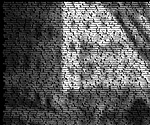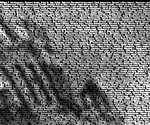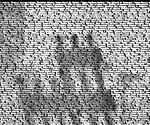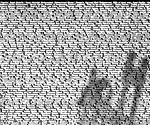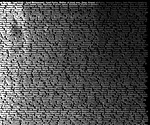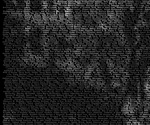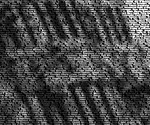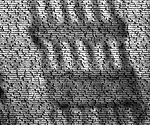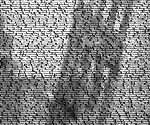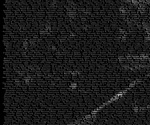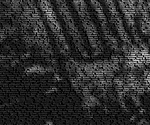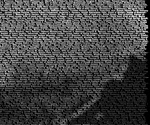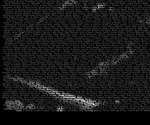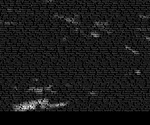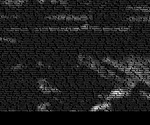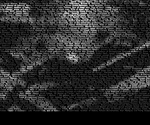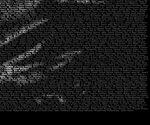
|
||||||||||||||||||||
|
||||||||||||||||||||
| Move over Picture! "Ground Zero Project - in betwheen" (2001 - 2011) A tribute to John G. Ueltzhoeffer, † September 11 2001 | ||||||||||||||||||||
| MoMA PS1 Projects: "To receive a name" - The list of death people in the context of nine eleven 2001 - 2011 by Ralph Ueltzhoeffer. | ||||||||||||||||||||
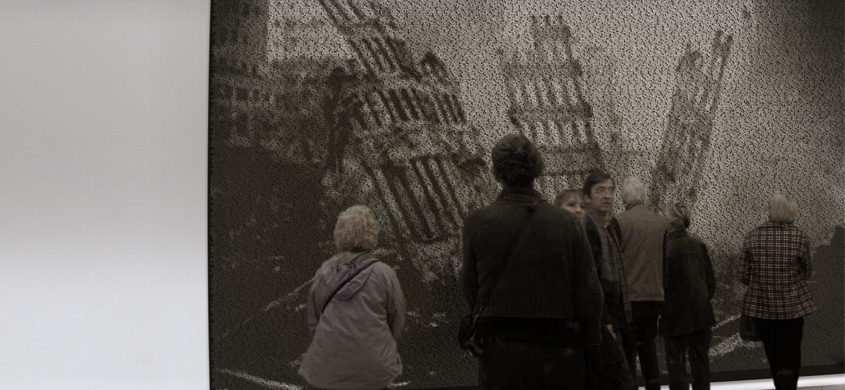 |
||||||||||||||||||||
| Photo by Aaron Fendt. © The Museum of Modern Art, New York | ||||||||||||||||||||
Ralph Ueltzhoeffer |
||||||||||||||||||||
| November 12, 2010 - Februrary 8, 2011 | ||||||||||||||||||||
In his first solo museum exhibition in the United States, Mannheim-based artist Ralph Ueltzhoeffer (born Germany, 1966) constructs a internet based project on the mechanism of the web 2.0. (2005—2011) Project Textportrait (Identity), — "The phishing Project" and a museological-style installation of biographical elements, and pictures. (Description): In the “Textportraits” images and words are equally used to generate a portrait, understood as the visual representation of an individual or situation. Combining the miscellaneous digital information he composes portraits using words, texts (names) referring to the trait of human cognition to hide daily routine perceptions in “blind spots”. Ralph Ueltzhoeffer’s artistic research is dedicated to the relationship of visual and written information in the digital sphere and their relevance for the beliefs one produces from these data. His search for new forms synchronizing visual and written information reacts and reflects on the internet as an open and central source of information in times of globalization and digitalization of data. In the synopses of visible and readable information he engenders visuals which require new perceptional approaches. Organized by Julia Anderson, Curator, Department of Photography. The Elaine Dannheisser Projects Series is made possible in part by The Junior Associates of The Museum of Modern Art. |
||||||||||||||||||||
1770 days Internet Art Project “TEXTPORTRAIT“ Description: Text portrait as visual display is inseparably assembled out of text (internet) and photos and is therewith bound to a readable portrait. The typeface white on black relates to the DOS input mode (visually). That way, in 2002 one of the first text portraits was created out of the text: Wikipedia „David Beckham“ and his portrait photo by Ralph Ueltzhoeffer. Description: "Public space" - As the internet was in a new process of development regarding search functions at that time (2002/2003), exclusively digital presentation in the net was not imaginable. That is why the first text portraits were exhibited location-dependant on billboards (Plakatinstallation Mannheim) and so at least the public character of the art work could be met. Later, exhibitions at historical locations, as Ground Zero, New York as well as in showcases of cafés, subway stations etc., followed. “There is no location where art could not be presented” „The internet is a gift for democracy. Nowhere else are there less financial, technical and political hurdles to express your opinion. On the other side the quality controls do not apply as customary in print media. Oftentimes information is not proof-read and no editorial office views the material, the possibility of anonymity brings forward misuse. However, too many internet users still take everything they read on their browser window at face value [...]“ A.K. Simmel 2006 The art project text portrait deals with the multi liberal handling of personal data. Personal data (photos, biographies, text etc.) was partly found fully automated and was at that time exposed to anyone! The art project text portrait combines photos and text to a so called „TEXT PORTRAIT“. Can the Internet Make a More Open Government? The Obama presidential campaign made groundbreaking use of social networking sites and other tools to organize its supporters. President Obama has promised to use similar technology to bring citizens into government. As in so many other areas, turning promise to policy may well be more difficult than it sounded on the campaign trail. That’s the conclusion of Peter Swire, who was a lawyer for the new media team of the Obama transition leading up to Inauguration Day. He had also worked as the top privacy officer for the Clinton administration. He has now returned to his job as a law professor at Ohio State University and as a fellow with the Center for American Progress. He published a paper Monday on the early use of Web 2.0 techniques by the administration. (The paper will be on the Web later in the day here.) The administration, at least in the early days, has struggled to replicate the responsiveness of the campaign, he argued. The paper cites a survey of new media experts by the National Journal that gave the administration’s Web 2.0 efforts a grade of C+. Mr. Swire writes that the scope of the problem became clear in the transition, which was much less responsive to comments and questions than the campaign: The campaign learned how to cope with a motivated group of just over 10 million individuals. After Election Day, the transition and later the administration had to respond to the concerns of over 300 million Americans, as well as interested persons in other countries. More important, campaigns trade in aspirational generalities. The government, Mr. Swire writes, defines the framework of rules that affect so many people. Moreover, even vague foreign policy statements are parsed for nuance. The upshot is that many government pronouncements need to be cleared by policy makers, slowing down the process of responding to queries. The consequences, Mr. Swire writes, in an extreme but not entirely impossible example, could well be dire: Now suppose a White House blogger — or someone else answering comments on whitehouse.gov — can’t get a hold of the North Korea expert and simply goes with his or her best judgment about what to say. During the campaign, that could backfire if the other candidate gets a good talking point. But in government, the consequences can be much more serious: What if North Korea didn’t like the White House comment and decided to launch a missile attack on a neighboring country? Mr. Swire lists some ways that the Obama administration has gotten around some of these constraints so far. It has extensively used Web video to communicate. Video has an immediacy, he writes, but it still essentially one-way communication. A final approach Mr. Swire cites is simply to sample comments randomly. President Obama is said to receive a purple folder each night with 10 letters he has received, by mail, fax or e-mail. I’m not sure that most people who send a letter to the president expect he will read it personally. But I do know that the campaign promise for open and interactive government is a difficult one to keep. And the promises keep coming. Citizens are invited to find and report abuse in the stimulus program using its recovery.gov Web site. Mr. Swire, by the way, also is releasing two more papers Monday: One is on the legal issues faced by government agencies that want to use social networking tools. The other looks specifically at the challenges for government in using free software and Internet services. What are some of the other ways the White House can be more responsive to more people? Article | 06/14/2009 Re: How Does That Make You Feel? ...University of New South Wales have discovered. They've found that Internet-based therapy works as well as in-person... |
||||||||||||||||||||




